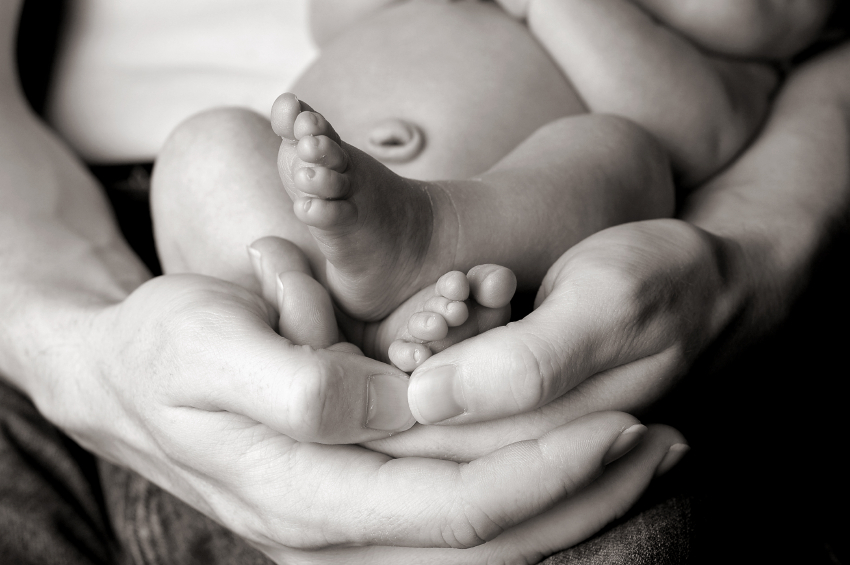The multidisciplinary prenatal diagnosis centre in Rennes carried out an experiment from 2006 to 2012 alongside parents who had chosen to take the pregnancy to its term after having being informed that a lethal malformation had been diagnosed. It analysed the relation that the parents and the child established in the neonatal palliative care centre. The study shows that “the baby living, even for a short period in time, enabled the parents to meet the child and to create memories of it.
Abortion is not the only option
When the child has a serious malformation or if carrying on with the pregnancy puts the life of the mother at risk, abortion is legal in France until term. Thus, when a foetal malformation that will prevent the child from living more than a short time after it is born is detected, “many parents believe abortion on medical grounds to be the only option, the less painful one”.
Before 2006, year in which the study was started, women who chose to carry on with their pregnancy were very badly followed after the baby was born: “the accompaniment offered was minimalistic and there was no real existing plan to welcome and meet the newborn”.
However, more and more women are asking to carry on with their pregnancy, despite the diagnosis. They speak of their desire to “meet alive their child at birth, and many have written books about their experience.” It was thanks to these books that doctors and health professionals started “bit by bit to see things differently, and began”: developing neonatal palliative care in agreement with the parents, in order to offer an alternative to abortion.
Towards palliative medicine in neonatology
The French public health code defines palliative care as “active and continuous care carried out by a multidisciplinary team in an institution or at home, aiming at alleviating physical pain, relieving psychic pain, ensuring the sick person’s dignity, and supporting his loved ones”.
Since this study on neonatal life and parents in neonatology was carried out, “it has become normal for the hospital in Rennes to offer palliative care at birth as an alternative to abortion, when a malformation known as lethal and incurable has been found”. In a case in which the family agrees, and with constant dialogue, the professionals organize the birth around palliative care: who is going to greet the new born, where is it going to be put, treating the pain, the follow up of the relation between parents and children. The idea is to “offer couples a choice that will enable them to meet their child, which is believed to help the parents to grieve”.
Collecting “memory traces”
With parents, collecting memory traces starts before the death of the child. The study offers a couple of examples of memory traces: « photographs, sometimes family photographs with the parents and siblings taken by a member of the team when the child was alive, sometimes short videos, ink foot imprints are made post-mortem, some mothers keep a strand of hair or a hat (…); one family asked for the cocoon where the child was wrapped, another family asked for a print of the FHR(1)”.
This study showed that “offering palliative care at birth can answer the expectations of couples faced with serious foetal malformations which, for various reasons, have no hope of being cured”. However, as expressed in the conclusion of the study, “90% of parents end up choosing abortion” anyway. The study ends with a reflexion on the fact that “one of the unanswered fundamental remaining questions is how parent grieving is experienced and progresses after the death of the child. There is no answer to whether or not it is different from grievance after abortion because of the parental investment, the meeting with the living child and the attachment it causes or shows”. What is for sure though, is that, over everything else, parents who have made this choice hope to be given the “chance to meet their child”.
[1] Classification of foetal heart rate traces, editor’s note.

